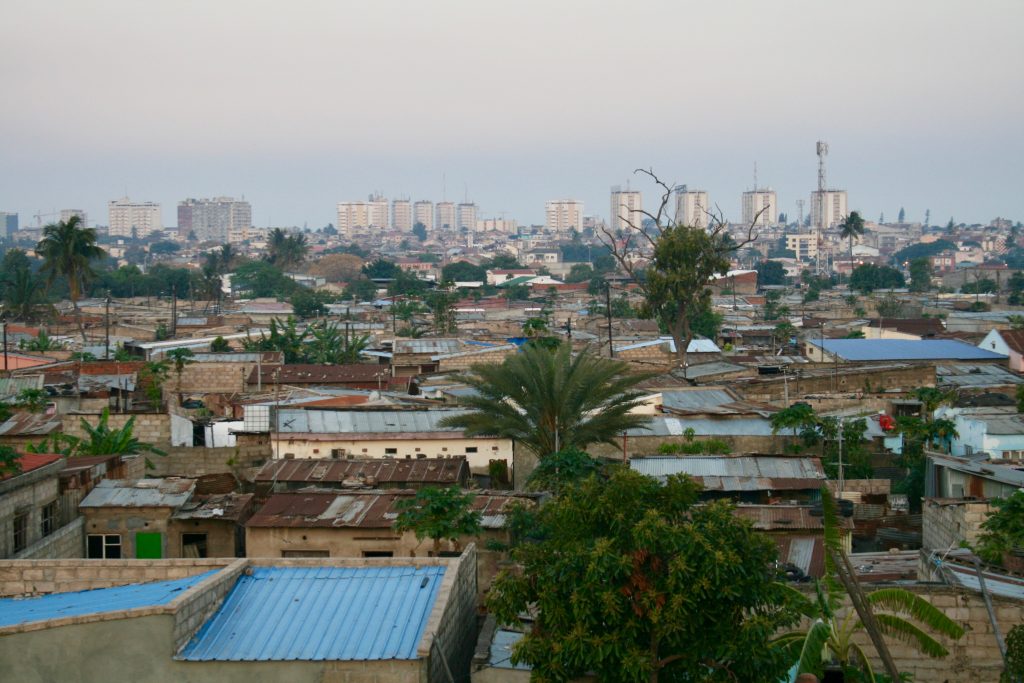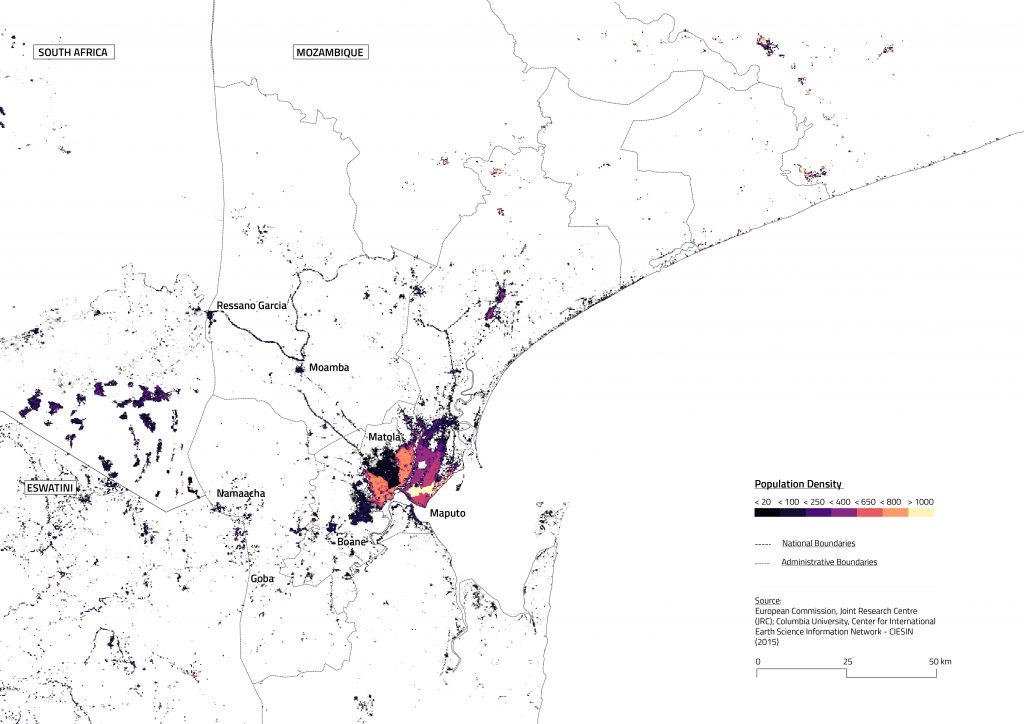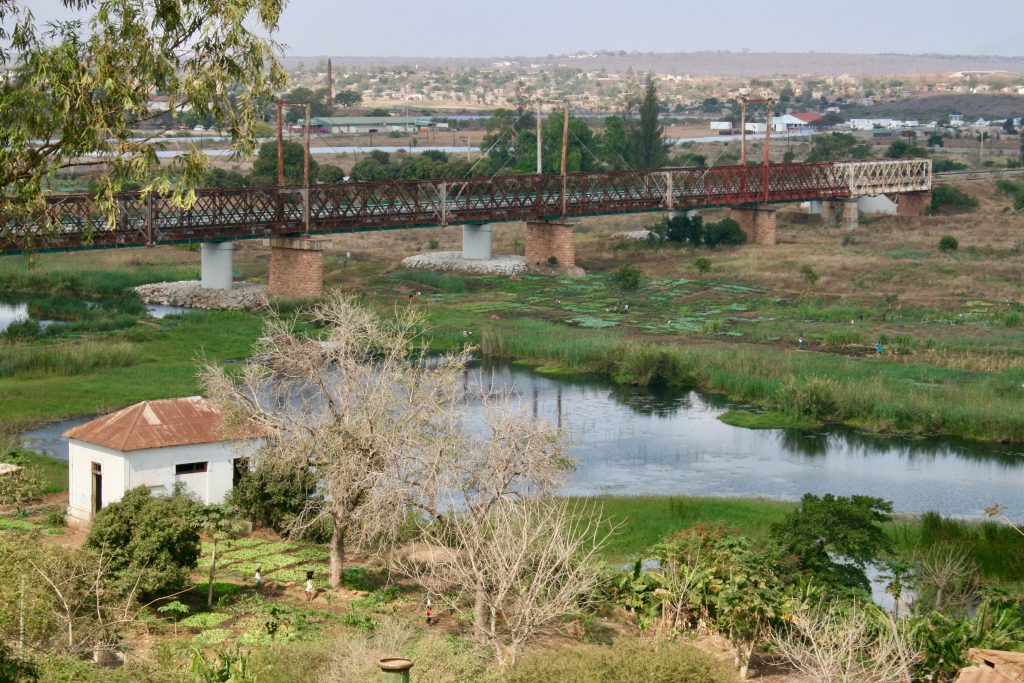Mozambique’s capital city, Maputo, and its province are located in the southern part of Mozambique on the east coast of Africa.
National boundaries overlap with geographical characters that shape the province and its landscape. In particular, the Lebombo Mountains, a long narrow mountain chain, range with volcanic origins, stretch north-south separating the Kaapvaal Craton (South Africa and eSwatini) from the sedimentary basin of Southern Mozambique, setting a natural border.
Maputo Bay, where the three main rivers of the province (Umbeluzi, Incomati, Maputo) reach the sea, is the most relevant geographic feature in the region. It forms a valuable harbor, accessible to large vessels at all seasons of the year, and was thus perfect for European traders to settle, kicking off Maputo urban history.
The city has grown for two centuries as one of the most important port cities in Eastern Africa, especially thanks to the convenient connection with Johannesburg and Gauteng’s region mining industries.
Today, the inhabitants living inside the municipal boundaries have overcome one million and the city has crossed administrative limits, merging with Matola, to host more than 2 million people, a number that doubled in the last ten years.

Sprawling low-density patterns are rapidly consuming land and Greater Maputo is expanding over agricultural fields and forests, concentrating urbanization around the bay and along the main infrastructure lines, while the rest of the province is mostly non-urbanized nor cultivated and characterized by natural landscapes.
The existent valuable ecosystems and high biodiversity are threatened by climate change and anthropic pressure. In particular, deforestation, pushed by logging for valuable timber species and for charcoal or by “slash-and-burn” agriculture, has completely changed local landscapes. Community forestry and re-afforestation programs are promoted by the government to save the socio-ecological value of forests as poverty reduction anchors, but the long-term perspective of these initiatives make them difficult to be accepted by local populations, that rather prefer fast return activities to face daily challenges.
Most of the rural population rely on subsistence agriculture, but climate change and production costs are affecting the sustainability of traditional farming. Technical education in agriculture is thus a key issue to support the local economy while dealing with food security and public health.

Food security, in facts, is one of the most critical issues for Maputo’s future, with most of the food consumed in the city being imported from abroad, according to more or less formal dynamics. Growing food in the province is getting more and more difficult due to the scarce fertility of soils and to the lack of water caused by climate change, governance problems, water competition and absence of infrastructure.
The presence of foreign investors in agriculture is limited, but they get the best land and the scarce available water to grow cash-crops for export. Local entrepreneurship in agriculture, instead, is very limited, even because of the difficult accessibility of rural population to markets and services.
Scarce connectivity across the Province, depending on the limited density of its road network, isolates the majority of rural populations living further than 2km from any classified road. Moreover, fuel has a high costs, making mobility, mechanization and energy access another crucial challenge.

These processes of unbalanced and unsustainable territorial growth, breaking the metabolic relation between urban and rural systems as part of a synergic process of development, risks to aggravate the socio-economic and political fragility of the Province and to worsen the quality of life of its inhabitants. Actions are required to increase awareness about the interdependencies and linkages among existing assets, processes and projects to facilitate sensitive decision making, people awareness and engagement and effective governance and planning tools.
